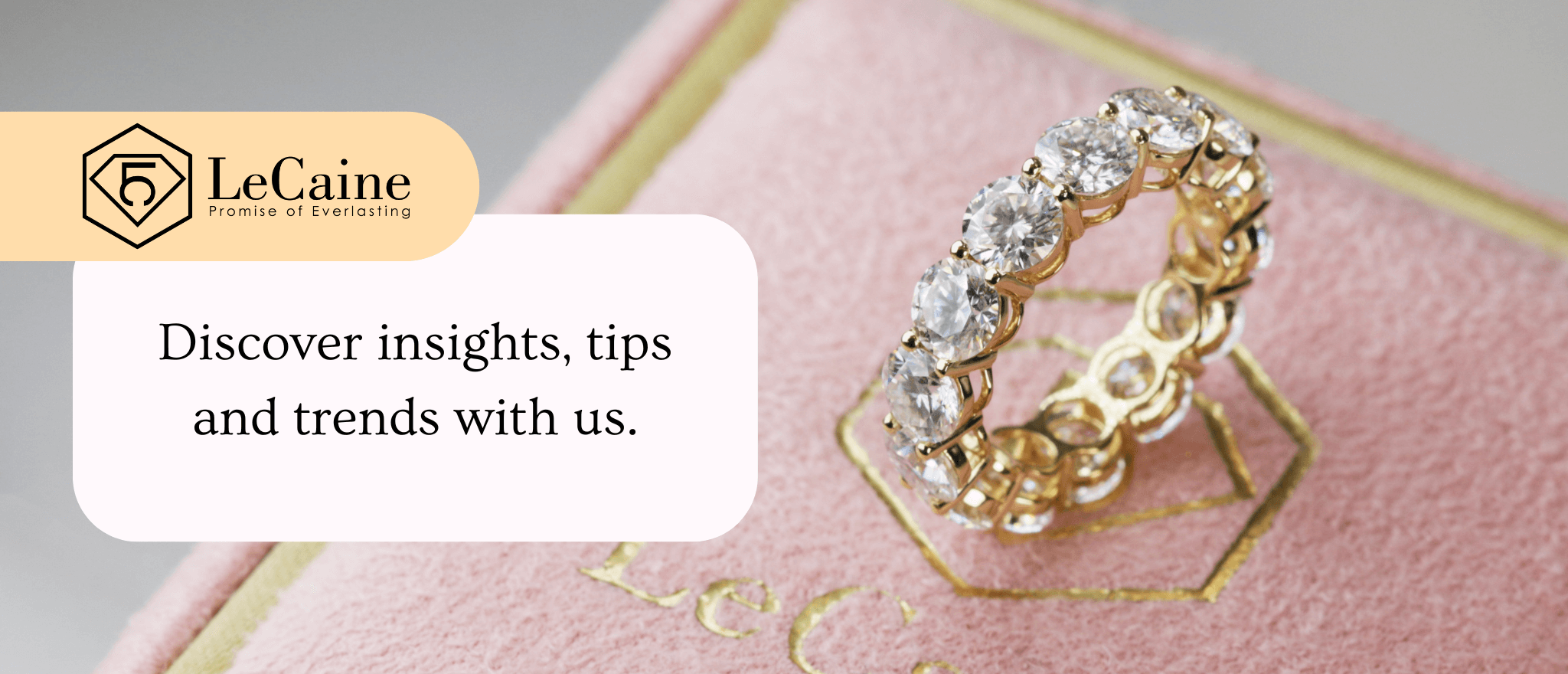
Blogs Page 4 - LeCaine Gems
25
Nov
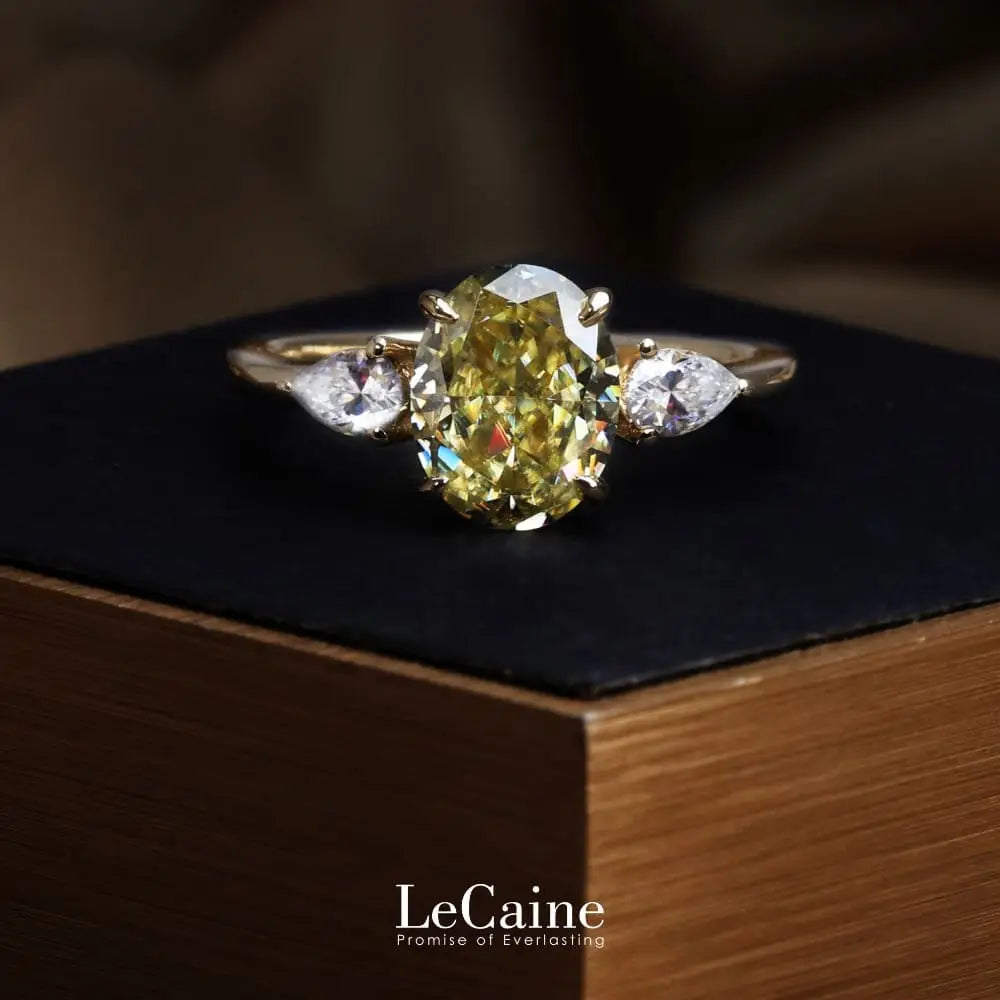
Colored Moissanite: Beauty Beyond the Ordinary
Since gaining popularity in the 1990s, moissanite has taken the jewelry world by storm. Its beauty and durability have captivated the hearts of jewelry buyers, making it a top contender for engagement rings (Brides.com). With a projected global market of $48.9 million in 2024 and an estimated 8% annual growth (cognitive market research), moissanite’s popularity is undeniable.
Moissanite offers an extraordinary story. Natural moissanite is a true rarity even more elusive than diamonds (moissanite international). These celestial gems are often nestled within meteorites or deep within the Earth, whispering tales of their cosmic origins. Although moissanite is rare in its natural state, there is a constantly increasing demand for this alluring gemstone. Moreover, like other jewelers (Southern Jewelry News), our sales and requests for colored moissanite are a significant indicator of their growing popularity.
How Is Colored Moissanite Made?
Though moissanite is sought after for its exceptional fire, superior to diamonds of the same cut, high-quality stones with deep and vivid colors are also desirable (Keyzar). The colors in moissanite are generally permanent with normal use and care. However, moissanite processed to create fancy colors may fade if subjected to extreme heat.
Colored moissanite is crafted through advanced laboratory techniques that manipulate the inherent properties of silicon carbide (SiC) by introducing specific elements or coatings to create a spectrum of vibrant hues. For instance, nitrogen impurities can impart a yellow hue, while boron or other minerals can result in green coloration. Brown moissanite, on the other hand, is typically caused by the presence of iron impurities.
Techniques like high-pressure, high-temperature (HPHT) treatment and irradiation are used to enhance or introduce new colors (Fire and Brilliance). HPHT treatment can intensify existing hues, such as deepening yellow moissanite or introducing a golden hue. Irradiation, on the other hand, can alter the surface of the moissanite to produce various colors.
When purchasing colored moissanite, it is crucial to source your pieces from reputable jewelers like LeCaine, who ensure the quality and durability of the gemstones. Only by choosing trusted sources can you guarantee the beauty and longevity of your colored moissanite jewelry.
The Unmistakable Beauty of LeCaine's Colored Moissanite Creations
Blue Moissanite
Blue gemstones are often cherished for their beauty and profound symbolism. They are often associated with tranquility and peace, evoking feelings of relaxation and harmony. Some interpretations extend further, associating these stunning blue gemstones with abundance and aligning their hue with prosperity and well-being.
Virginia Oval Gray-Blue Moissanite Trilogy Ring in 18K Gold
The Virginia ring is a stunning example of elegant design that underlines LeCaine Gem's reputation for its craftsmanship. Its gray-blue oval moissanite, set in a four-prong setting, is complemented by delicate side stones that gracefully form floral motifs.
The serene blue-gray hue of the moissanite, combined with the intricate craftsmanship of the Virginia ring, evokes feelings of tranquility and sophistication. LeCaine uses only the finest quality moissanite to ensure exceptional clarity and color. Our blue and gray moissanite ring is particularly captivating, with a serene beauty evoking the mystery of deep blue oceans with an air of refinement.
Blue Gray Asscher Cut Moissanite Stud Earrings in 18K Gold
These exquisite Asscher-cut moissanite earrings, each adorned with a stunning three-carat gray-blue gemstone, are a testament to timeless elegance. The four-prong setting and the unique and serene luxury of the blue-gray hue enhance the stone's brilliance. These Asscher-cut earrings are a masterpiece of craftsmanship, designed for the discerning woman who appreciates fine jewelry.
Yellow Moissanite
The vibrant yellow hue of a yellow moissanite holds a deep symbolic meaning. Yellow gemstones are often associated with happiness, energy, and warmth, as their color reflects the life-giving essence of the sun. Beyond their luminous appeal, yellow gemstones can also signify power, confidence, and inner strength, making these pieces meaningful expressions of the positivity and resilience of the wearer's character.
Dawn Intense Yellow Moissanite Pendant in 18K Gold
Pure elegance radiates from the exquisite Dawn Intense Yellow Moissanite Pendant, which showcases a breathtaking 5-carat yellow pear-shaped moissanite as its centerpiece. Round brilliant and marquise clear moissanite accents enhance its brilliance and fire, collectively elevating its alluring design. Together, these dazzling gemstones boast a total carat weight of 5.9 carats.
Dawn Intense Yellow Moissanite Earrings in 18K Gold
These beautiful Intense Yellow Moissanite Earrings perfectly complement the Dawn Intense Yellow Moissanite Pendant Necklace. Featuring a radiant combination of marquise, pear-shaped, and round clear moissanite stones, each earring highlights a striking, intense yellow pear-shaped moissanite as its centerpiece. Together, these four stones create a harmonious design with a total carat weight of 3.9 carats for each earring, offering unmatched brilliance.
Green Moissanite
While wearing green gemstones has often been associated with wealth, they are also believed to emanate a unique energy tied to growth, renewal, and emotional balance. The color green is often associated with nature and vitality, symbolizing the desire to expand one's horizons and overcome challenges. This vibrant hue is thought to inspire resilience and personal transformation, making these gemstones an empowering choice for those seeking progress and renewal.
Gennie Forest Green Moissanite Ring in 18K Gold
The Gennie is a stunning dark green moissanite piece, perfect as an engagement or anniversary ring. At its heart lies a fiery 2-carat, 8mm brilliant-round cut green moissanite, radiating a rich, deep hue that symbolizes growth and renewal. This striking centerpiece is complemented by the ring's symbolic two-tone design, crafted from 18K white and rose gold, signifying the union of two lives merging into one.
Asscher Mint Green Moissanite Solitaire Pendant in 18K Gold
This stunning mint-green Asscher-cut moissanite pendant never fails to capture its own unique charm. The distinctive step-cut facets of its 2-carat Asscher-cut moissanite reflect light in a mesmerizing pattern, making it an eye-catching centerpiece and a guaranteed conversation starter at any event. This versatile piece is available in 18K rose, yellow, or white gold, with any metal perfectly capturing the stone's geometric beauty and appeal.
Gray Moissanite
Gray gemstones carry profound symbolic meanings and metaphysical properties. They are often associated with intuition, mystery, and transformation. Moissanite, for example, has a stunning ability to capture light in subtle yet enchanting ways, making gray moissanite quite desirable. These stones are thought to inspire self-reflection and spiritual growth, helping individuals navigate life's uncertainties with clarity and purpose.
Carat Tatiana Gray Moissanite Ring in 18K Gold
The Tatiana is a beautiful blend of vintage charm and contemporary elegance crafted in 18K gold. Its center stone is a striking 2-carat brilliant-cut gray moissanite, set in a 4-prong design, making this piece a standout choice as an engagement ring. Surrounding the center stone is an oval halo of smaller clear moissanite stones, enhancing its brilliance with moissanite side accents, adding an antique and regal flair.
Discover LeCaine Gem's Colored Moissanite Pieces
Discover the extraordinary beauty and craftsmanship of LeCaine Gems jewelry featuring exceptional colored moissanite. Each piece, from engagement rings and earrings to pendants and necklaces, transcends the ordinary. From the serene hues of blue-gray and mint green to the vibrant warmth of yellow, each piece tells a unique story. Each piece by LeCaine Gems is handcrafted with care and precision, featuring certified gemstones.
Celebrate life's precious moments and make them truly memorable!
LeCaine Gems offers designs that truly resonate with your heart. Explore our collections today and let the brilliance of moissanite illuminate your journey!
30
Oct

A Guide to Customizing Lab-Grown Diamond and Moissanite Jewelry
Custom jewelry used to be reserved for the very wealthy. A diamond tennis bracelet from a leading jewelry company costs $20,000 (CNN). Can you imagine how expensive that piece could be if you wanted to add subtle touches to make it uniquely yours? Today, technological advancements in lab-grown gem production, for both lab-grown diamonds and moissanite stones, have meant larger and higher-quality stones are more abundant, which directly translates to their affordability. With a substantial proportion of personalized jewelry taken up by the gem's price, commissioning exceptional designs is now attainable to more people. At LeCaine, we are dedicated to transforming your jewelry vision into tangible, cherished pieces. From pieces you plan to wear daily to intricate pieces reserved for a once-in-a-lifetime occasion, lab-grown diamonds and moissanite provide the unique possibilities you desire.
Why Lab-grown Diamonds?
Aside from their affordability, lab-grown diamonds and moissanite, especially those offered by LeCaine Gems, showcase exceptional quality, fire, and brilliance that rival their mined diamond counterparts. Moreover, recent customer sentiment favors materials sourced from sustainable and ethical sources. Though this sentiment is popular throughout a variety of industries, such as in fashion, skincare, food, and even the cars we drive, nowhere is the shift to environmentally conscious alternatives felt like in the fine jewelry industry.
Understanding Your Style and Preferences
Assess Your Personal Style
Classic:
The classic style might be your ideal choice if you prefer traditional designs. It is strongly identified with sophistication, clean lines, and appeal that transcends fashion eras.
Modern:
Modern styles cover a vast range of fashion styles. However, they all offer fresh and innovative approaches for those who embrace contemporary trends and cutting-edge designs. Today, modern styles are associated with bold shapes, unique cuts, and exceptional combinations.
Corporate:
Corporate styles are an excellent option for more polished, professional designs appropriate for a working environment.
What Color or Colors Do You Prefer?
White Stones:
White lab-grown diamonds and moissanite stones are popular choices for pieces that offer an enduring and versatile look that complements any outfitting options.
Featured Piece: The Laura Ring in White Gold Featuring a Round-Cut Lab-Grown Diamond
Yellow Gemstones:
Yellow lab-grown diamonds and moissanite stones add a warm and sunny glow to your jewelry. These colors create a cheerful and vibrant statement, whether worn with complementary shades or with matching attire.
Featured Piece: The Asscher Canary Yellow Moissanite Solitaire Pendant in Rose Gold.
Pink Jewels:
Pink is synonymous with feminine charm. Pink lab-grown diamonds and moissanite stones are ideal for anniversary bands, engagement rings, and pieces reserved for special occasions.
Featured Piece: The Cherie Emerald Lab-Grown Sapphire Trinity Ring featuring an emerald-cut pink sapphire as its center stone.
Blue Gemstones:
Blue lab-grown diamonds and moissanite are best for pieces that highlight the wearer's sophistication and character. Eye-catching and unique, blue gems are best for statement jewelry pieces.
Featured Piece: Chloe Mistique Moissanite Ring featuring a brilliant-cut blue moissanite center stone.
Which Metals Do You Prefer?
Platinum:
Platinum is durable and has hypoallergenic properties. Its lustrous white color makes it a popular option for timeless, elegant, and luxurious pieces.
Design Inspiration: The 1.5-Carat Mera Moissanite Platinum Ring
This vintage-styled moissanite platinum ring features a mesmerizing 1.5-carat brilliant round-cut moissanite surrounded by moissanite accents, creating a halo effect. Five clear moissanite stones are mounted on each side of the band, giving it a regal appearance.
White Gold:
Though it appears identical to platinum, white gold is available at a lower cost, making it well-suited to both elegant and understated pieces.
Design Inspiration: Heart-Shaped Moissanite Pendant in 18K White Gold
Set in shimmering 18K white gold, this captivating pendant features a heart-shaped moissanite surrounded by a moissanite-studded halo.
Yellow Gold:
Yellow gold, or simply "gold," is associated with luxurious and enduring jewelry designs. It is an option for those who want their jewelry to stand out and get noticed. However, well-designed pieces crafted in yellow gold also provide a subtle, understated option.
Design Inspiration: Niki Round-Cut Moissanite Solitaire Ring in 18K Yellow Gold
This 18K yellow gold moissanite ring features a mesmerizing 1-carat brilliant-cut moissanite prong-set on a dainty, tapered band.
Rose Gold:
Rose gold has only recently become popular because of how well it coordinates with modern fashion choices. Moreover, rose gold complements a broad range of skin tones.
Design Inspiration: Niki Round-Cut Moissanite Solitaire Ring in 18K Rose Gold
Featuring the same tapered band that made the Niki rings popular with jewelry fans who love rings with understated designs, this 18K rose gold solitaire ring enhances the beauty of the 3-carat moissanite it holds.
Which Gem Settings Are Best?
Prong Setting:
Prong setting is best for showing off the stone because its open sides let light in better than other settings. Though well-crafted prongs are durable, prongs do protrude and might get caught on clothing.
Design Inspiration: Niki Round Moissanite Solitaire Ring with 6-Prong Setting
The 6-prong setting of this shimmering yellow gold ring enhances the mesmerizing effect created by its featured 3-carat round-cut brilliant moissanite main stone.
Bezel Setting:
Also known as rub-over setting, this setting is a practical and a very secure way to set gemstones. However, this setting does not let as much light under the stone, making colored gemstones darker.
Design Inspiration: Nona Round-Cut Moissanite Bezel-Set Solitaire Ring in 18K White Gold
A round brilliant-cut moissanite fits snuggly within the Nona ring’s bezel setting, creating a modern and sophisticated look.
Channel Setting:
Not to be confused with the name of a famous designer, channel settings feature multiple gemstones set side by side in a channel, creating a continuous band of color and sparkle.
Design Inspiration: The Safiya Moissanite Half-Eternity Ring
The Safiya embodies why channel settings are best for eternity rings. Seven enthralling moissanite stones are channel-set in this beautiful matching set.
Halo Setting:
The halo setting is popular for exceptional engagement rings because of its dazzling and eye-catching effect. This type of setting is characterized by larger gemstones surrounded by a ring of smaller stones, typically melee diamonds.
Design Inspiration: Mera Round Moissanite Halo Ring in 18K Rose Gold
The Mera features a 2-carat round-cut brilliant moissanite main stone whose brilliance and fire is enhanced by a mesmerizing halo of moissanite stones set lower than the main stone, creating a look unique to this ring.
Which Gemstone Shape Do You Prefer?
Round-Cut:
Round-cut gemstones offer the best scintillation of any cut, and are suited for pieces that will highlight their brilliance and fire.
Design Inspiration: Patricia Round-Cut Moissanite Trilogy Ring
This exquisite rose gold ring features three mesmerizing prong-set round-cut moissanite stones, enhancing their brilliance and fire.
Oval-Cut:
Oval-cut gemstones offer a graceful and elongated shape, making them ideal for exceptional pieces, such as statement rings and earrings, pendant necklaces, and engagement rings.
Design Inspiration: Ollie Oval Moissanite Solitaire Ring in 18K Gold
The Ollie features a 1-carat oval-cut moissanite prong-set in 18K gold. The Ollie has a low-setting making them excellent as a ring that can be stacked with a wedding ring.
Pear-Cut:
Their teardrop shape adds sophistication and elegance to your attire, whether as pendant necklaces, earrings, or rings.
Design Inspiration: The 2.5-Carat Maisyn Pear Moissanite Ring in 18K Gold
The Maisyn features a 2.5-carat pear-shaped moissanite set with a halo surrounded by dainty moissanite accent stones. Its vintage-inspired design is punctuated with further diminutive moissanite stones set in its band.
Princess-Cut:
Princess-cut gemstones have a square shape with cut corners. Princess-cut gems are best for pieces that offer a modern and edgy look.
Design Inspiration: The Ivory Princess Moissanite Ring in 18K Gold
The intricate design of the Ivory ring features a resplendent princess-cut moissanite mounted highly by a basket crown on a shank that has a unique partial milgrain metalwork in rose gold.
Marquise-Cut:
With their tapered oval shape, marquise-cut gems create a unique and eye-catching design.
Design Inspiration: Maise Marquise Moissanite Ring in 18K Gold
The staggering beauty of the Maise ring centers on its mesmerizing prong-set 2.5-carat marquise-cut moissanite surrounded by dainty moissanite accents under and around the prongs, making the ring shine whichever side it's viewed from.
How Can I Customize My Lab-grown Diamond or Moissanite Jewelry Piece?
Step 1: Consult with a Jeweler:
Begin by clicking on this link to our contact page to arrange an appointment for a consultation meeting or call. This consultation provides you an opportunity to discuss your vision for the piece, including your preferred style, design elements, and gemstones. We will also consider any specific preferences, fashion choice, or inspirations you have.
Step 2: Design Options:
We will work with you to develop design options that align with your vision and preferences. Examples of our bespoke jewelry are available on our site. We may also provide sketches, renderings, or computer-aided design (CAD) models to help you visualize your final piece.
Step 3: Selecting the Perfect Lab-Grown Diamond or Moissanite:
You may choose the lab-grown diamond or moissanite for your jewelry piece once you have decided on a design. Please consider factors, such as carat weight, clarity, cut or shape, and color to find the perfect stone for your piece.
Step 4: Choosing the Setting and Metal:
Your choice of metal is one of the most important decisions you can make when designing your piece because it will impact its overall look and feel. Moreover, the setting is a vital design element that defines how your jewelry piece will blend with your fashion style. Discussing these preferences is essential in determining the best combination to showcase your chosen gemstone and design to suit the occasion when they will be worn.
Step 5: Creating the Custom Piece:
Once we finalize the design and complete the selection of the metals, setting, and choice of gemstones, we will begin crafting your custom piece. The production process involves skilled artisans who specialize in various stages of jewelry manufacturing, such as cutting, setting, and polishing your gemstones.
For the Best Jewelry Customization Experience, Visit LeCaine Gems!
LeCaine Gems offers the best jewelry customization experience for its clients. Leveraging on our excellent customer service and the skills of our artisans, who have perfected their craft for generations, you can rest assured that your custom jewelry piece is worthy of the unforgettable occasion it marks. Visit us on our site to learn more about our customization service, or drop by our store at the Millenia Walk in Singapore.
26
Jul
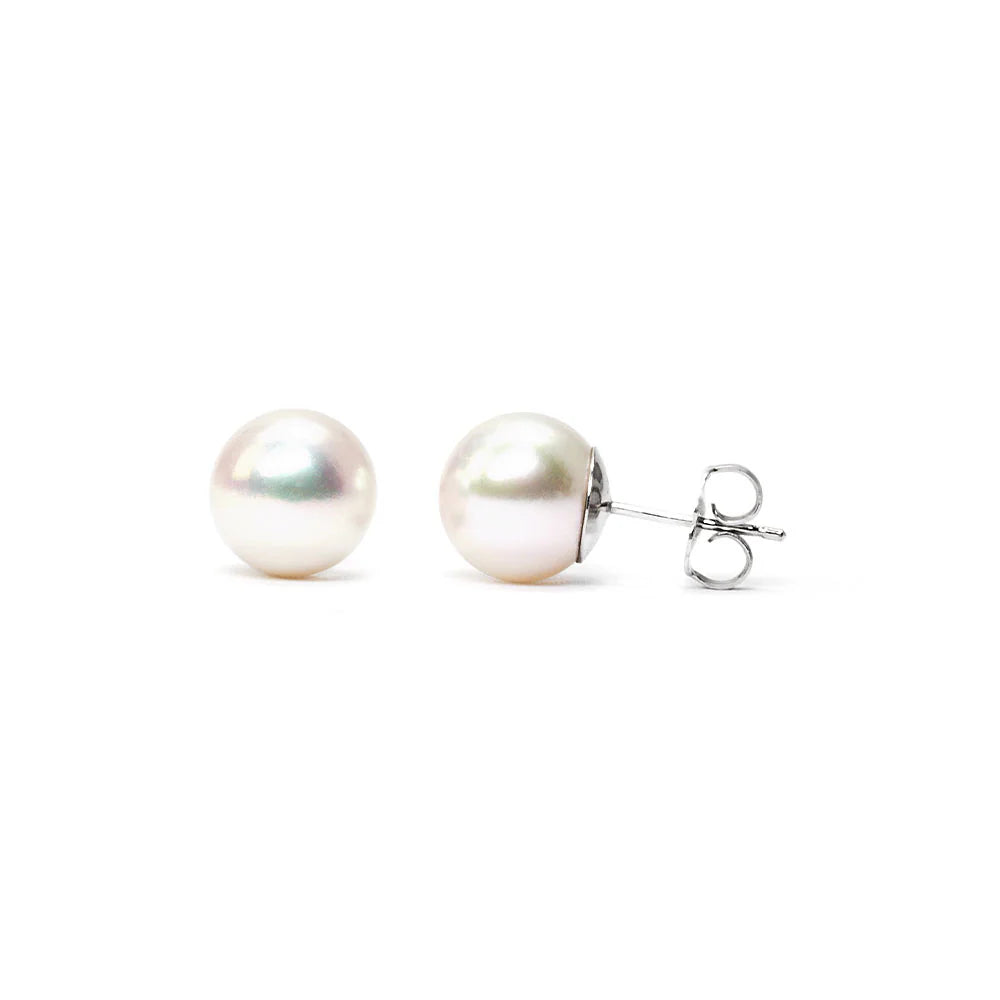
The Allure of Akoya Pearl Earrings: A Guide to Timeless Elegance
Picture elegant and lavish parties attended by the crème de la crème wearing the latest in haute couture. Imagine Coco Chanel wearing the epitome of flapper fashion or Jackie Kennedy Onassis in her era-defining attire.
24
Jun
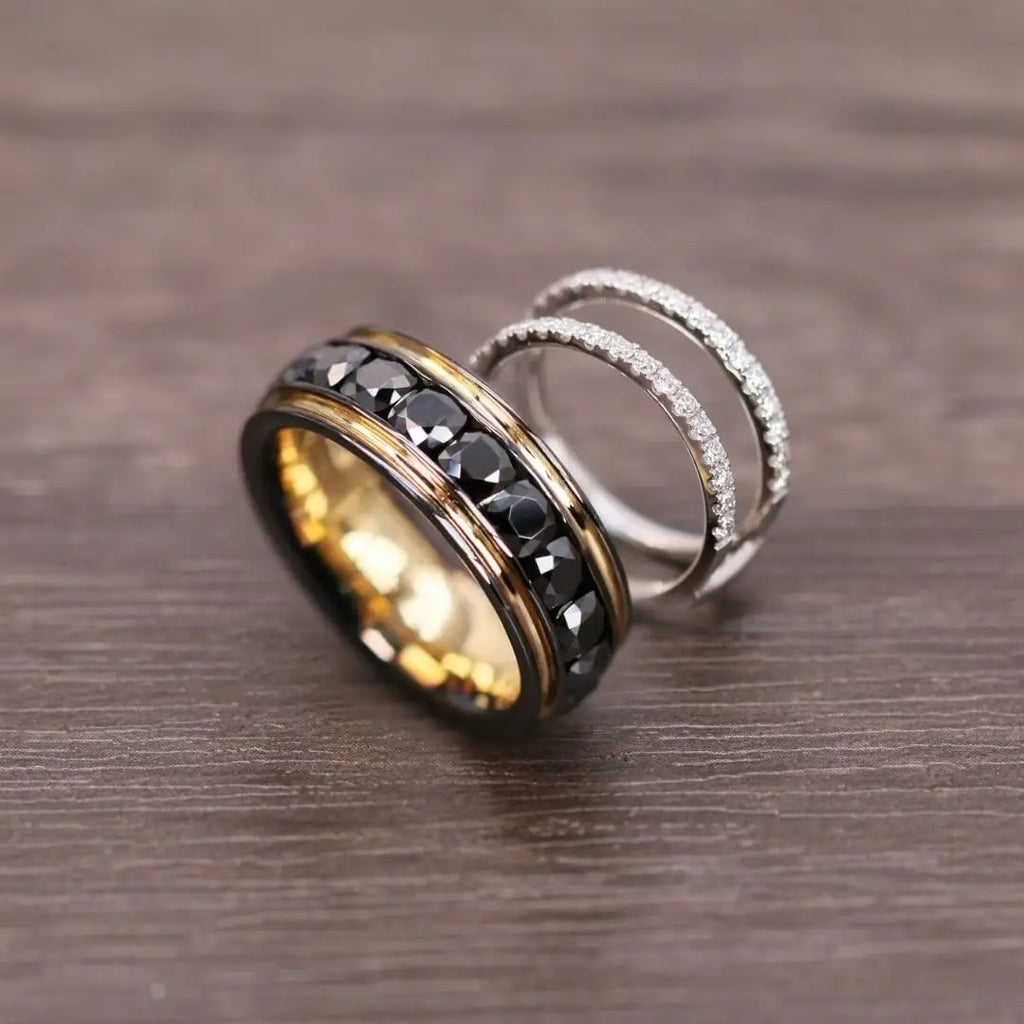
The Value of Stunning Moissanite Wedding Bands: Shine Bright on a Budget
A wedding is a momentous occasion that requires a significant amount of planning. Choosing a date and location, a gown for the bride, and a suit for the groom can take months.
24
May

The Ethical Proposal: Why Choose a Lab-Grown Diamond Engagement Ring
The popular Chloe Lab-Grown Diamond Engagement Ring features a 0.77-carat center stone set in six prongs. This dainty ring is crafted from 18K gold and features a nature-inspired design with sparkling oval-cut lab-grown diamonds gracing its intricate details.
Love cannot be defined clearly with words. Though we can cite many sources that try to define love, one of the philosophers who closely approaches this is Fromm in his book “The Art of Loving.” He stated that “love is an active power in a man,” and the active aspect of love is “giving.”However, even Fromm cannot provide a precise definition of love.
Love is such a metaphysical term that symbolism is the only way to grasp its meaning. One of the quintessential symbols of romantic love is the ring, as exemplified by engagement and wedding rings. Being seen wearing one portrays an image of being committed to a lasting relationship.
Buy how did rings become synonymous with commitment and engagement? The first documented record of a diamond ring gifted in a proposal was in 1477, when Archduke Maximillian of Austria proposed to Mary of Burgundy, effectively making that the first engagement ring. The tradition caught on with the elites, presumably expressing love and commitment. As South African diamond mines began supplying the world with more diamonds, they became more widely available. The masses, or at least those who could afford it, adopted this tradition by the 19th century. It has been a symbol of commitment since.
“Diamonds Are Forever,” According to De Beers, That Is…
The inherent characteristics of diamonds make them perfect stones for engagement rings. They are, after all, the hardest naturally occurring substance on earth. Along with dazzling cuts mounted on exceptional jewelry designs led by Cartier and more affordable alternatives manufactured by Kay, diamonds reach more people than ever. The line “Diamonds Are Forever” is a marketing campaign that changed the industry. The line referred to both the physical longevity of diamonds and the fact that they retain their value. This perfectly fits the idea that a diamond engagement ring is a symbol of commitment, or a commitment to love, in its purest sense.
In recent times, however, people have begun to question diamond sources, entering the term “Blood Diamonds” into popular lexicography upon the release of the movie of the same name. Today, though the diamond industry passed the Kimberley Process to slow the proliferation of diamonds from suspect sources, there is a stigma among buyers, especially the younger market, in choosing natural diamonds.
Lab Grown Diamonds: An Ethical Way To Say I Do
The Shirley Round-cut Lab-Grown Diamond Engagement Ring features a 1-carat brilliant round-cut solitaire set in six prongs on a tapered ring design. Its timeless design is a classy expression of elegance and love.
Lab-grown diamonds are produced under simulated conditions that form natural diamonds. The two most economical methods of making lab-grown diamonds are high-pressure high temperature (HPHT) and chemical vapor deposition (CVD).
HPHT is an older method in which seed diamonds surrounded by pure carbon are placed in a growth chamber and subjected to a high-pressure and high-temperature environment for weeks until a gem is formed.
CVD is a recent method where pure carbon from methane broken down by ionization can merge with a heated diamond seed in a container. The entire process is conducted in a vacuum in a specifically designed machine.
Centuries of artisan perfected technique make pieces like the Charlize lab-grown diamond trilogy ring possible. Its 1.3-carat center stone flanked by 0.18-carat teardrop-shaped stones in intricate settings crafted in 18K gold makes a compelling and ethical choice.
Both methods produce stones physically and chemically identical to natural diamonds. Lab-grown diamonds possess the same hardness as natural diamonds. Granted, they have similar cuts and the same brilliance and fire. Even a trained jeweler must use specialized equipment to distinguish between natural and lab-grown diamonds.
Now manufactured in laboratories, lab-grown diamonds avoid the questionable sources found with “conflict diamonds.” Moreover, Singapore, where LeCaine sources its lab-grown diamonds, is at the forefront of cutting-edge lab-grown diamond production. They follow strict manufacturing and labor best practices, providing an added layer of assurance. Moreover, the efficiency of facilities producing lab-grown diamonds and their shorter supply chain make every gem result in a lower carbon footprint than its mined counterparts.
Beyond Ethics: More Value for Every Gem
The Emilia Lab-Grown Diamond Engagement Ring boasts a 2-carat E-color emerald-cut stone held by four claw prongs and surrounded by a dazzling octagonal halo of lab-grown diamonds combined in a vintage design. Lab-grown diamonds allow such an exceptional piece to include a gemstone of this size at a reasonable price point.
Since its introduction in the 1950s, lab-grown diamond manufacturing has experienced rapid improvement, resulting in its capability to produce larger gem sizes with superior clarity and color. Lab-grown diamonds available at LeCaine Gems have a clarity grade of VS-VVS1, which matches rarer natural diamonds, at sizes ranging from 0.2 carats for melee to 4 carats. The efficiency of the manufacturing process and its shorter supply chain also mean diamonds of exceptional quality are available at affordable prices.
Each lab-grown diamond that graces engagement rings from reputable jewelers like LeCaine Gems is IGI-certified, assuring buyers of their traceability and authenticity. The size, quality, and affordability allow jewelers to provide discerning buyers with engagement rings with exceptional designs and a flexible choice of gem sizes and colors, such as the Eartha Princess-Cut Lab-Grown Diamond Engagement Ring. This impressive piece features a 1.54-carat blue lab-grown diamond set in four prongs on a ring with a twisting nature-inspired design graced by dazzling lab-grown diamond accents.
Making the Right Choice Is up to You and Your Partner
Nowadays, gifting a loved one a diamond engagement ring transcends its initial purpose of expressing love and commitment. Today, choosing a precious piece of jewelry also reflects a commitment to ethical and sustainable practices. Because of their affordability, lab-grown diamond engagement rings are viable choices for couples with the same outlook on practicality.
When it comes to craftsmanship and quality, LeCaine Gems provides exceptional lab-grown diamond engagement rings. Their access to cutting-edge lab-grown diamond manufacturing facilities ensures that clients can choose the best possible engagement ring designs with a flexible range of diamond sizes at a reasonable budget. With lab-grown diamond engagement rings provided by LeCaine, you can have the ultimate expression of love and commitment while making an ethical and sustainable choice. With the same brilliance and quality as mined diamonds at an accessible price point, choosing a lab-grown diamond engagement ring speaks to your love, devotion, and values.
16
Apr
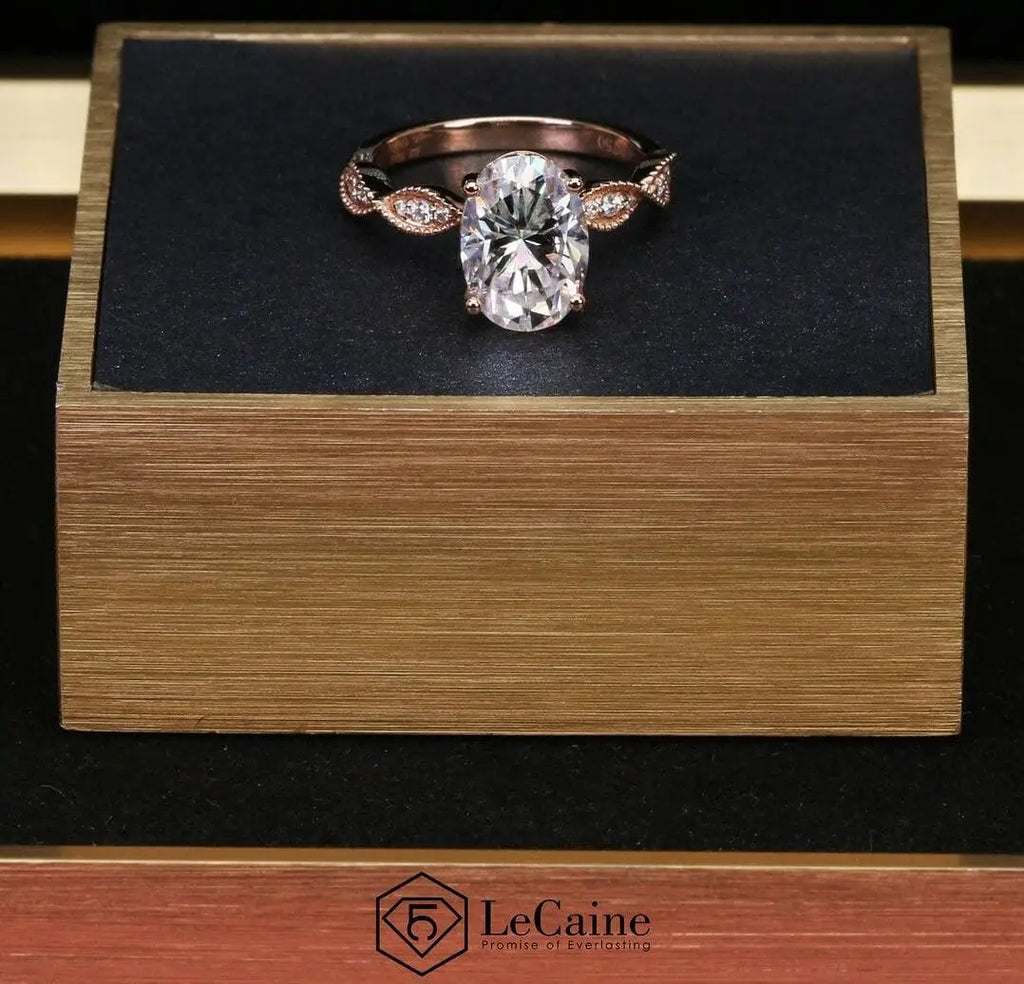
Why LeCaine Is the Best Place To Buy a Moissanite Engagement Ring
An engagement ring is a profound expression of devotion and commitment to a dearly beloved partner. Its shape indicates its meaning, being without beginning and end, punctuated by a dazzling gem, traditionally a diamond. Today, other viable alternatives exist to substitute for diamonds, such as lab-grown diamonds, birthstones, and moissanite. The reasons for gemstone choice can be varied and personal. However, even if the choice of gemstones isn’t diamonds, the stone chosen, though more affordable, doesn’t diminish the message an engagement ring is trying to convey.
Why Should I Choose Moissanite for My Engagement Ring?
The most obvious reason for choosing moissanite is its affordability. However, there are additional reasons why moissanite offers more value, especially when mounted on engagement rings:
Durability: Moissanite always stays bright and beautiful because of its superior hardness and refractive index.
Brilliance and Fire: Moissanite also sets itself apart from diamonds for having more brilliance and fire.
Versatility: Moissanite is available in many colors, including colorless varieties, which makes them perfect for customized engagement rings.
Eco-Friendliness: Moissanite doesn’t come with as high a carbon footprint as producing minded diamonds. Moreover, the supply chain for moissanite is much shorter, and there is little to no possibility of facing the suspect labor practices associated with mined diamonds.
Moissanite’s superior visual qualities, excellent physical properties, and sustainable production provide immeasurable value beyond its affordable price.
Why Should I Choose LeCaine for My Moissanite Engagement Ring
Moissanite’s popularity is supported by its availability. Today, there are many jewelers worldwide that offer moissanite engagement rings. Each jeweler offers characteristics that make them unique. Among these jewelers, LeCaine stands out for several compelling reasons:
A Market Leader in Moissanite Jewelry
For years, LeCaine has gained the trust of savvy clients in Singapore. They leverage the latest technology to establish a reputation for creating the best examples of moissanite set in the finest jewelry pieces. Combined with decades of jewelry-making excellence, they make excellent, sustainable, and sophisticated alternatives to diamond engagement rings.
Engagement rings, such as the stunning Carme Round Moissanite with Halo Ring in 18K gold, are a testament to the craftsmanship and jewelry-making excellence that established LeCaine as a trusted source of moissanite engagement rings in Singapore. With the best color and clarity, its moissanites look fascinating, complementing its exquisitely crafted half-pave shank.
Versatile in Providing Special Moissanite Cuts and Colors
LeCaine has access to the best tools in moissanite production. Cutting-edge technology enables them to create moissanite with the best quality and the versatility to produce dazzling moissanite gemstones in different colors. Though moissanite is renowned for its hardness, decades of gem-cutting excellence enable LeCaine to produce cuts that rival the best in the world.
The mesmerizing Seina Round Blue Grey Moissanite with Halo in Pave Band Ring in 18K gold exemplifies LeCaine’s versatility in providing gemstones with exceptional colors. Its bewitching blue-grey moissanite enchants and elicits awe and adoration as it sits on a halo and half-pave of dazzling white moissanite stones.
Popular Physical Store
Millenia Walk, located between Marina Square and Suntec City, is a premier shopping experience in Singapore, where numerous prestigious shops offer high fashion, jewelry, and international cuisine. LeCaine’s physical store in Millenia Walk is a popular spot for savvy clientele who seek exceptionally-crafted jewelry with sustainable gemstones. Their sparkling reviews are a testament to the trust they have established with their clients for decades, many of them returning or referring friends and relatives.
A Long Tradition of Craftsmanship
LeCaine is one of the few jewelers faithful to traditional jewelry production. Though they use the latest technology in creating moissanite stones, their jewelry production methods follow centuries-old traditions. Their craftsmen from Singapore and Hong Kong are renowned jewelers who create pieces that rival or exceed those of renowned jewelers from fashion capitals such as New York, London, or Paris.
The intricate metalwork and precise jewelry setting required for the Queen Myka Round Moissanite with Knife Edge Pave Band Ring is stunning. The process required to create such a perfect masterpiece of luxurious modernity is a culmination of more than a century’s worth of experience in jewelry design, craftsmanship, and manufacturing.
A Sterling Tradition of Ease in Customization
LeCaine Gems has established a reputation for the ease clients find in customizing pieces that fit their design tastes. LeCaine takes pleasure in providing personalized first-class service for their bespoke jewelry. From finding the perfect stone to crafting the ideal ring design, LeCaine has a team of specialists who ensure clients get the engagement ring that resonates with the statement that is uniquely theirs.
This custom ring has a subtle twist that completes a perfectly crafted helix-shaped eternity band encrusted with stunning moissanite stones, a perfect way to mount a dazzling moissanite center stone.
Commitment to Ethical Business Practice and Sustainable Jewelry
LeCaine is proud to be at the forefront of sustainability in jewelry. Though customer preferences for lab-grown gem options is a rising trend, especially for younger jewelry buyers, LeCaine embraces sustainability out of their sense of responsibility for conserving the planet’s resources and ensuring fair labor practices. LeCaine also guarantees the authenticity and conflict-free sourcing of their gemstones through certification.
Competitive Pricing
Given the level of craftsmanship and the perfection of their moissanite stones, LeCaine offers moissanite engagement rings at an attractive price point. The knowledge, skill, and versatility placed in creating each piece entail tremendous savings compared to a comparable piece from rival jewelers. Their guarantee of authenticity, free design consultation, and product assurances further enhance the value of each LeCaine moissanite engagement ring. A prime example is the Adalina Radiant-Cut Three-Stone Moissanite Ring, which you can acquire for about half the price of a comparable piece from other jewelers.
Ability To Sell Worldwide
LeCaine’s online store enables them to reach clients worldwide. With sales from the USA to Australia, the UK, and many other countries across Europe, North America, and Asia, LeCaine’s international reputation is rising. Backed by secure payment options and unbeatable refund and shipping policies, buyers can rest assured that they will receive the highest-quality engagement rings wherever they are in the world. LeCaine’s online store also allows worldwide buyers to customize their engagement rings.
LeCaine Gems: Your Best Possible Choice for Buying a Moissanite Engagement Ring
At LeCaine Gems, we impart a piece of ourselves with each piece of jewelry we offer. Our access to the latest technology, traditional jewelry crafting techniques from the best and most versatile craftsmen, ethical and sustainable business practices, ease of customization, fair pricing, and ability to deliver your moissanite engagement ring anywhere in the world set us apart from our competition. Explore our stunning moissanite engagement rings and let LeCaine Gems craft the perfect symbol of your love story - a moissanite engagement ring reflecting your values that shines with the promise of everlasting love.
29
Mar
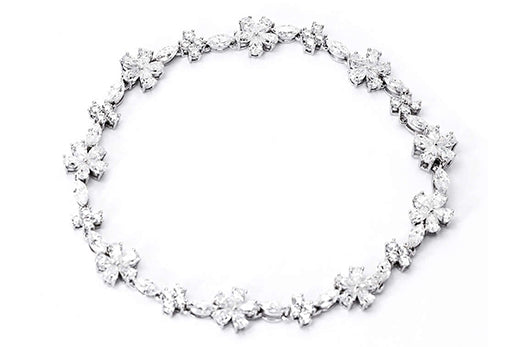
Lab-Grown & Moissanite Tennis Bracelets: The Perfect Diamond Alternatives
Flashback to 1978, Chris Evert's gold and diamond bracelet fell off during one of the early rounds of the U.S. Open.
12
Mar

Customizing Your Lab-Grown Diamond Ring to Reflect Your Love Story
An engagement ring signifies a strong intention to embark on a lifelong journey together. Steeped in tradition, engagement rings symbolize the love and commitment between two individuals.
26
Jan

7 Reasons Millennials Are Choosing Lab Grown Diamonds
With influential, forward-thinking celebrities like Meghan Markle and Emma Watson embracing sustainable alternatives to mined diamonds, lab-grown diamonds have taken the celebrity world by storm, and millennials are quick to follow suit...
22
Dec
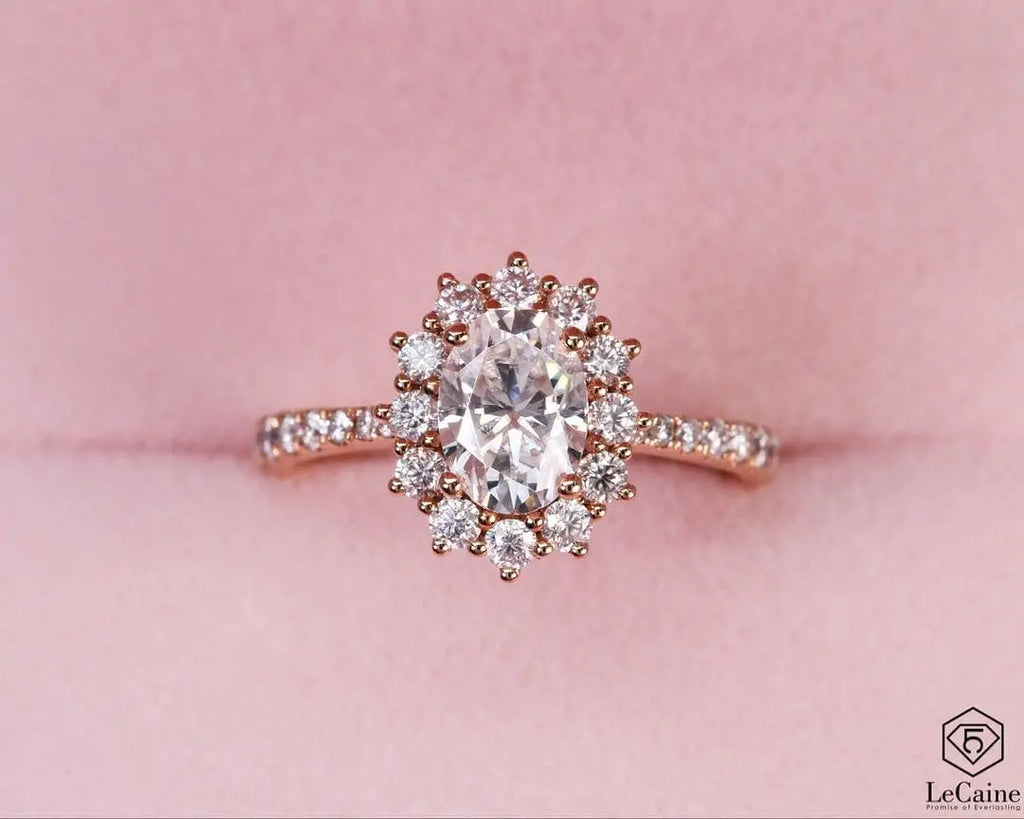
Are Lab-Grown Diamonds Worth It? Here Are 7 Reasons Why They Are!
Embarking on the journey to find the perfect diamond engagement ring can be daunting, especially when bombarded with alarming headlines about lab-created diamonds. The traditional diamond industry, entrenched in its ways, thrives on consumer confusion, advocating for the continued use of natural diamonds. However, the era of lab-grown diamonds is firmly entrenched. Here are seven compelling reasons why you should wholeheartedly embrace them.
Lab-Created Diamonds Are Legitimately Real Diamonds:
Shop Kaylyn Ring
The perennial question of whether lab-grown diamonds are genuine often arises. The unequivocal answer? Absolutely. Like this 1.5-carat brilliant round-cut lab-grown diamond mounted in the Kaylyn Ring, they possess chemical, physical, and optical properties identical to their naturally occurring counterparts. While natural diamonds are formed by nature, lab-grown diamonds are crafted with cutting-edge technology in scientific laboratories.
Consider natural diamonds as the rare, organic ingredients sourced from the heart of nature, much like prized truffles unearthed from the soil. These diamonds, formed over eons, are the culinary treasures shaped by the earth's unique recipe—time, pressure, and geological magic. Just as truffles captivate with their distinct aroma and flavor, natural diamonds enchant with their individual characteristics, a testament to the earth's culinary prowess.
Now, imagine lab-created diamonds as artfully crafted dishes emerging from a cutting-edge kitchen. Like a skilled chef using molecular gastronomy, scientists manipulate carbon atoms with precision, orchestrating the creation of diamonds in a controlled environment. These lab-grown diamonds are the culinary delights born from human ingenuity, much like avant-garde dishes that surprise and delight with their innovative approach to flavor and presentation.
Technology continues to advance, with increasing numbers of companies entering the fray, offering improved processes and superior stones.
Unique Beauty of Lab-Grown Diamonds:
Shop Noris Ring
Both types of lab-created diamonds, CVD and HPHT, dispel the myth that lab-created diamonds lack the uniqueness of their mined counterparts. Like this exquisite 1-carat lab-grown diamond mounted in the Noris Ring seen above, each lab diamond is grown individually, mirroring the distinctive characteristics of diamonds from nature. No two lab-grown diamonds are precisely alike, showcasing their personality, inclusions, and color. It's crucial to approach the purchase of lab-grown diamonds with the same scrutiny applied to natural diamonds, focusing on the 4Cs for a unique and personal choice.
Eco-Friendly Choice:
Shop Penelope tennis bracelet
Critics argue that lab-grown diamonds are energy-intensive, but the environmental impact of diamond mining is often glossed over. Traditional diamond mining disrupts vast swathes of land, generating substantial mineral waste. Mined diamonds also have a considerable water footprint and a significant carbon footprint, dwarfing the energy consumption of lab-grown diamonds. Some labs are adopting renewable energy sources, further reducing their environmental impact. If sustainability is a priority, inquire about the practices of specific labs, such as the one that created the shimmering diamonds and sapphires found in the Penelope tennis bracelet.
Size Does Matter - Large Lab-Grown Diamonds:
Shop Emilia Ring
The narrative that only natural diamonds can deliver substantial size is outdated. Lab-grown diamonds are rapidly advancing, with examples like the 155-carat diamond grown in disc form at Augsburg University in 2017. Lab-grown diamonds are available in various shapes and colors, small or large, like the stunning 2.07-carat E-color emerald-cut main stone mounted on the Emilia Ring. The flexibility of lab production even allows for custom-made diamonds, catering to those with a penchant for unique colors or cuts.
Affordability Without Sacrificing Luxury:
Shop Lilith lab-grown diamond hoop earrings
While diamonds, including lab-grown ones, remain a luxury item, the cost comparison is compelling. Lab-grown diamonds can save you 40-60% compared to their natural counterparts. Initially around 20% cheaper, lab-grown diamonds have seen a rapid price decrease. This affordability allows you to indulge in larger stones or explore fancy colored diamonds that might have been out of budget with natural diamonds. Fine jewelry pieces, such as the Lilith lab-grown diamond hoop earrings, are offered at unbeatable prices, with the quality being equal to or exceeding pieces with natural diamonds, giving them unparalleled value.
A Realistic Perspective on Diamond Investments:
Shop Este Ring
Whether natural or lab-grown, diamonds shouldn't be viewed as financial investments akin to rare museum-worthy items. Their value depreciates upon purchase, much like cars. Typically, reselling diamonds results in a significant loss, as companies need to make a profit when reselling. Despite their drop in pricing, lab-grown diamonds offer a more cost-effective option without the illusion of a long-term financial return. For exquisite designs, choosing an engagement ring, such as the Este ring, offers exceptional value in this perspective.
Appraisals for Lab-Grown Diamonds:
The perception that lab-grown diamonds lack value is outdated. Reputable grading labs now accept and issue certificates for lab-grown diamonds, while jewelry appraisers recognize their worth. Certificates and appraisals are crucial for insurance, ensuring your engagement ring is valued correctly and protected. You can rest assured that all lab-grown diamonds offered by LeCaine Gems have IGI (International Gemological Institute) certification.
LeCaine Gems: Inspiring Elegance and Upholding Values
One name stands out in fine jewelry that seamlessly blends elegance with unwavering ethical values—LeCaine Gems. Renowned for its exquisite craftsmanship, LeCaine Gems has been a beacon of sophistication, crafting timeless pieces that transcend borders. With roots deeply embedded in Singapore and Hong Kong, the brand has become synonymous with bespoke styles narrating individual stories for every occasion.
What sets LeCaine Gems apart is its commitment to elegance and its dedication to ethical sourcing. Lab-grown diamonds, carefully assessed and handpicked by their GIA-certified gemologists, are at the heart of their offerings. LeCaine Gems embraces the brilliance and uniqueness of lab-grown diamonds, acknowledging their environmental sustainability and conflict-free nature.
The brand's advocacy for lab-grown diamonds aligns seamlessly with the changing tides of the jewelry industry. LeCaine Gems understands the importance of transparency and authenticity in the modern consumer's mind. Their commitment to utilizing lab-grown diamonds ensures that each piece not only sparkles with magnificence but also carries a story of responsible sourcing.
LeCaine Gems has carved a niche for itself with fair pricing that makes exquisite lab-grown engagement rings, tennis bracelets, earrings, and more accessible to discerning patrons. Their dedication to affordability does not compromise the superior craftsmanship that defines each creation. Every piece from LeCaine Gems is a testament to the brand's unwavering commitment to both beauty and values.
For those seeking more than just jewelry but an embodiment of their values and a celebration of individuality, LeCaine Gems stands as a trusted ally. Elevating the essence of elegance while championing ethical choices, LeCaine Gems is a name that resonates with those who believe in the enduring allure of fine jewelry with a conscience.
01
Dec
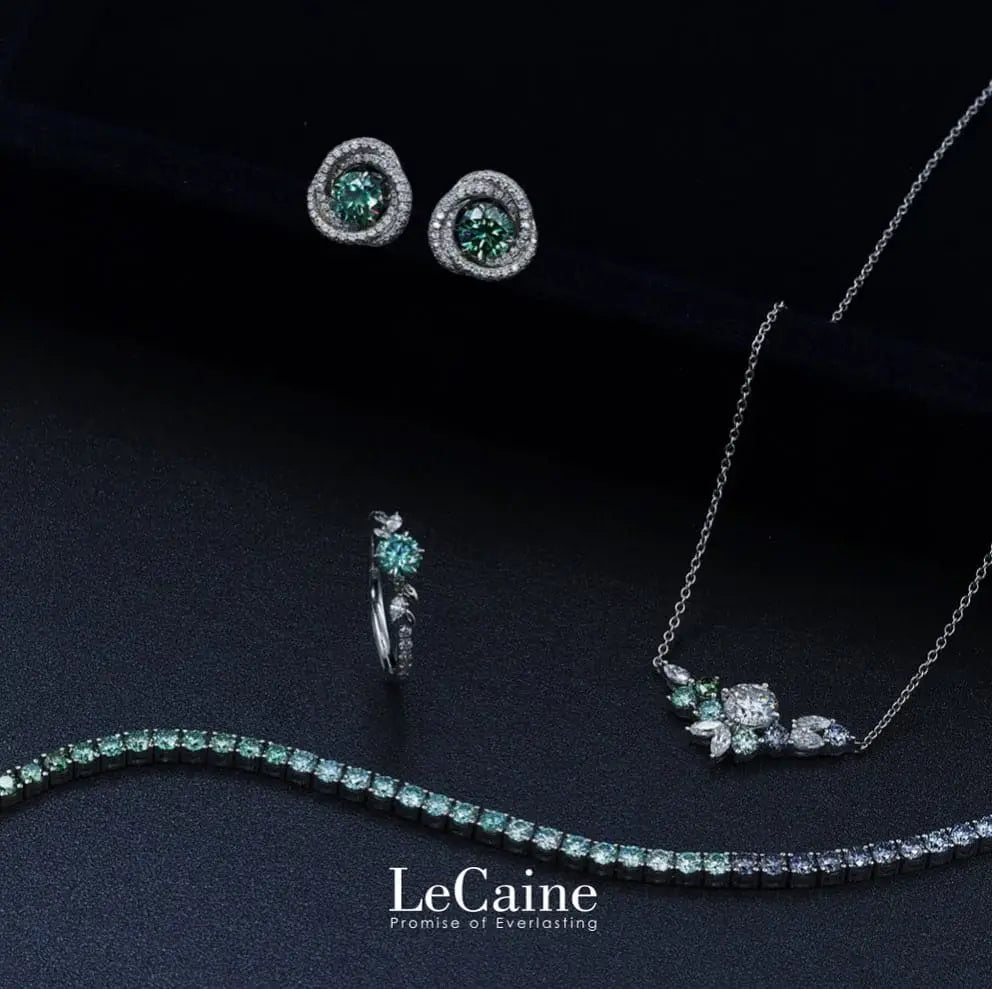
Top 10 Reasons Why Moissanite Custom Jewelry Offers the Most Value
In recent years, moissanite has gained immense popularity as a stunning and affordable alternative to traditional gemstones...
24
Jul

Jewelry Etiquette: Do’s and Don’ts for Every Occasion
Throughout the ages, the art of jewelry has held a paramount role in personal adornment, adding an essence of elegance and sophistication that transcends any outfit. Moreover, with the boundless possibilities of online jewelry in Singapore, augmenting your collection is an endeavour facilitated with remarkable ease.
However, understanding the appropriate use of jewelry for various occasions is essential to ensure our ensemble remains tasteful and respectful. Whether it’s a formal event, a casual outing, or a business setting, knowing the dos and don’ts of jewelry selection is crucial. In this article, we will delve into jewelry etiquette and provide valuable guidance on choosing the right pieces for every situation.
Formal Occasions
Black-Tie Events
On occasions of utmost formality, such as prestigious galas or elegant soirées, it is paramount to choose jewelry that harmoniously complements the refined ambiance without eclipsing your overall presentation. In this regard, it is advised to embrace jewelry pieces that exude elegance and subtlety.
Direct your attention towards fine jewelry that exudes a timeless allure, such as splendid diamond studs, delicate necklaces, or the charm of a simple bracelet. By doing so, the aim is to enhance your inherent beauty, placing a premium on the seamless integration of accessories rather than diverting focus towards them.
Shop Danica round moissanite hoop earrings
Weddings, Galas, and Upscale Parties
When attending weddings, galas, or other upscale gatherings, utmost consideration should be given to the event’s theme and dress code. Strive to coordinate your accessories with your ensemble, paying meticulous attention to colours, neckline, and overall style.
While adorning yourself with statement pieces is acceptable, it is essential to strike a delicate balance by incorporating subtler choices. For instance, if a statement necklace is worn, it should be paired with understated earrings, or vice versa. The objective remains to craft a seamlessly balanced look that emanates sophistication.
Casual and Everyday Wear
Everyday Jewelry Essentials
When it comes to everyday wear, it is prudent to invest in versatile jewelry items that seamlessly transition from day to night, effortlessly suiting any occasion. Opting for simple studs, delicate chains, and stackable rings proves to be an excellent choice.
These timeless and understated pieces gracefully enhance your casual ensembles, infusing them with a touch of elegance without overshadowing their inherent charm. Furthermore, mixing and matching your jewelry enables you to create diverse looks, thereby allowing you to express your style while maintaining a harmonious aesthetic.
Shop Yonah Dove Bracelet
Casual Outings and Social Gatherings
When attending casual outings or social gatherings, it is essential to adapt your jewelry selection to the atmosphere of the event. For relaxed and informal gatherings, you may explore a more playful approach in your choices. Experimenting with vibrant statement pieces can add an extra dimension to your ensemble.
Nonetheless, always prioritise comfort and practicality. Steer clear of jewelry that may hinder your social interactions or impede your physical activities. Remember, the objective is to feel at ease while showcasing your unique style.
Business and Professional Settings
The Workplace
In business and professional environments, it is of utmost importance to strike a balance between elegance and simplicity. It is recommended to embrace understated pieces that exude professionalism without overwhelming colleagues or clients. Delicate stud earrings, modest pendant necklaces, and unobtrusive bracelets are suitable choices in this regard.
It is prudent to avoid wearing bold or conspicuous jewelry, as it may divert attention away from your expertise or intended message. Always bear in mind that your jewelry should complement and enhance your professional demeanour, rather than detract from it.
Shop Olive ring
Job Interviews and Meetings
When attending key occasions such as job interviews or important meetings, it is paramount to choose jewelry that not only reflects your style but also upholds a refined and professional image. Opting for conservative and refined choices, such as delicate earrings or tennis bracelets, is strongly advised.
It is prudent to avoid adorning oneself with excessive or unconventional jewelry that might prove distracting to interviewers or colleagues. Your ultimate objective is to emanate an aura of confidence, competence, and a meticulously groomed appearance.
Conclusion
Acquiring a profound understanding of jewelry etiquette is indispensable in leaving an indelible mark on every occasion. It is further worth noting that jewelry, being a conduit of self-expression, possesses the extraordinary potential to transcend mere adornment, elevating your overall look and evoking an enduring perception of refinement and elegance.
Embrace the transformative power of LeCaine Gems and embark on a journey of timeless elegance. Explore our exquisite collection, crafted with meticulous attention to detail, and discover the perfect piece to complement your individuality. From captivating necklaces to dazzling earrings and enchanting 1 carat diamond rings in Singapore, our jewelry encapsulates the essence of sophistication. Experience the artistry and prestige of LeCaine Gems, and let our exceptional creations become an extension of your style.
 Skip to main content
Skip to main content

